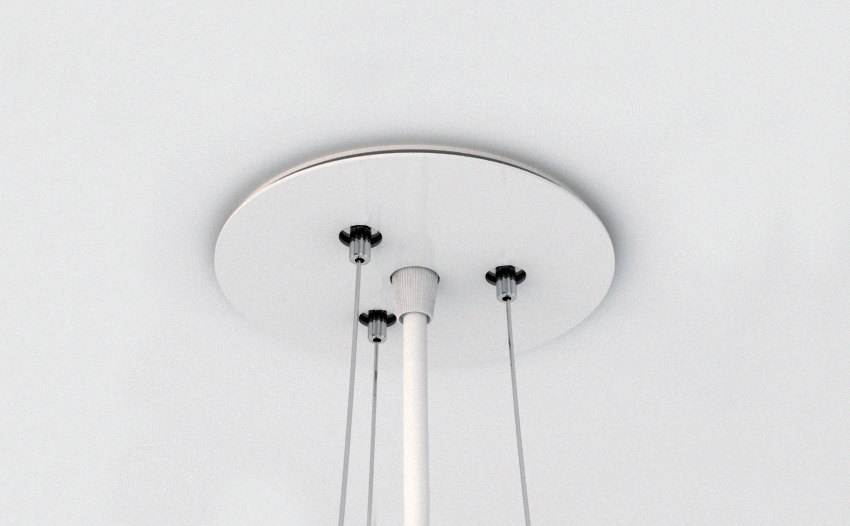Anatomy of a Light
There are many components and considerations that are important in understanding the anatomy of a light and therefore the effect light has on the anatomy of the space. Having an understanding of the components that make up a light is essential in achieving the right mood for the space as well as ensuring the space functions effectively for the end user. Understanding the technical anatomy of a light such as the lighting interface, wiring and LED drivers assists in creating a well functioning space. In addition, understanding the aesthetic anatomy of a light such as mounting, ceiling canopies and the light source assists in creating the right mood and aesthetic for the space.
Interface:
The lighting interface can vary significantly between different types of light sources. Consideration at the beginning of the project needs to be made into who needs to control the lighting onsite and what level of control is required over the lighting. For example, there are some situations when you would want to restrict access to lighting controls such as childcare, aged care, public spaces and retail environments.
Wiring:
Typically electrical wiring for light fittings will either be 3-core or 5-core depending on the light source. Most standard ES lampholders run off 240 volt, which requires 3-core wiring including 2 power cables and one earth cable. If a product has been wired using 3-core it can be difficult to later retrofit a digital dimming system. Whereas most LED light sources run off 12 or 24 volt, which requires 5-core wiring including 2 power cables, 1 earth cable and 2 data cables. In 5-core systems, data is passed in both directions which allows for information to flow from the interface to the light fitting and vice versa.
LED Driver:
An LED driver is required to regulate power to an LED light fitting. LED drivers can be non-dimmable or dimmable, typically dimmable drivers run on DALI, DSI or Switch DIM systems. It is common for LED drivers to be located in the ceiling cavity, however they can also be located on the light fitting itself as well as remote mounted in track lighting systems. It is important to be aware of the distance between the driver and the light source, because if there is more than 3m distance between the driver and the light source there is a risk of electromagnetic interference with the data signal. If you want your lighting system to work with digital dimming systems then you need the following:
– Interface that can control dimming levels and is compatible with your chosen dimming system.
– 5 core wiring
– Dimmable light source
– Dimmable driver if the light source is LED
Mounting:
Light fittings can be mounted to the ceiling or wall surface in many different ways. Typically light fittings are usually suspended or surface mounted, however with pre-planning recessed lighting solutions can be implemented.

Ceiling Canopy:
The ceiling canopy is an integral component within light fittings. As standard, all suspended Satelight light fittings are supplied with a low-profile ceiling canopy. The ceiling canopy disguises the fixing points as well as connects the power cable from the driver/mains power to the light fitting itself. Although dependant on the light fitting, ceiling canopies can provide a central hub for suspension cables to be connected to the ceiling. Ceiling pucks can be used in addition to a ceiling canopy if the fitting is suspended close to the ceiling or the fitting is of large scale. Satelight’s low profile ceiling canopies are supplied in a white powdercoat finish, which on a standard plasterboard ceiling is unobtrusive and blends into the ceiling seamlessly.
Light Source:
There are many different types of light sources for different light fittings. Light sources can include; bulbs, LED disks, LED strips, fluorescent tubes and more. Of these light sources only some are digitally dimmable. For example LED light sources are digitally dimmable which provide benefits in using a lighting interface. Other benefits of LED light sources include; low heat output, low power consumption, low running costs, long lifespan, technical abilities (CRI etc.) and choice of colour temperature. However not all types of light sources are digital dimmable. For example, light fittings that are fitted with ES lampholders for light bulbs are only dimmable on a pot-dimmer switch and can be difficult to retrofit in order to work on a digital dimming system. Likewise, ES lamps tend to have a much shorter lifespan as well as a lower energy efficiency in comparison to LED’s.
Understanding the technical and aesthetic anatomy of a light assists in creating the anatomy of the space that you are designing for. Having knowledge on lighting interfaces, drivers and wiring gives you the groundwork in creating a functional space. Having knowledge on mounting systems and light sources gives you the ability to create an aesthetically pleasing space. In conjunction both of these work together to achieve functional and aesthetic spaces.